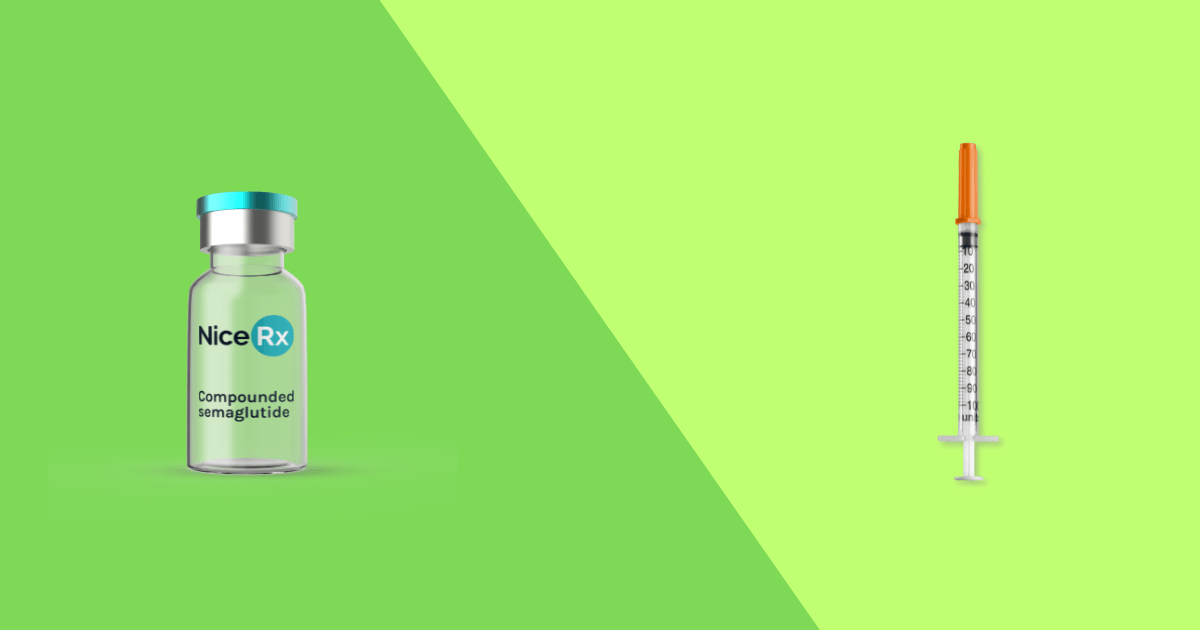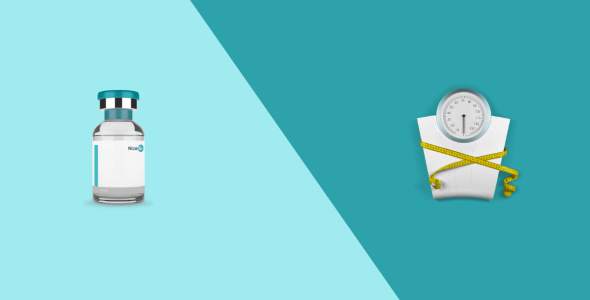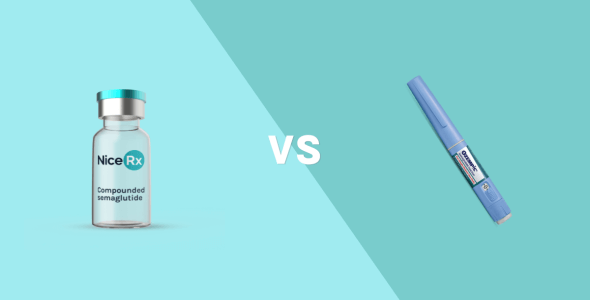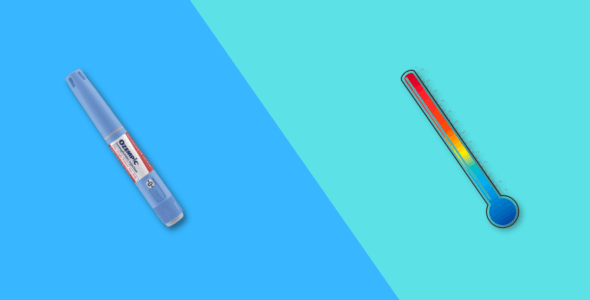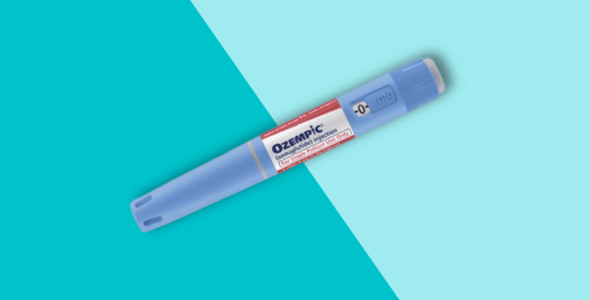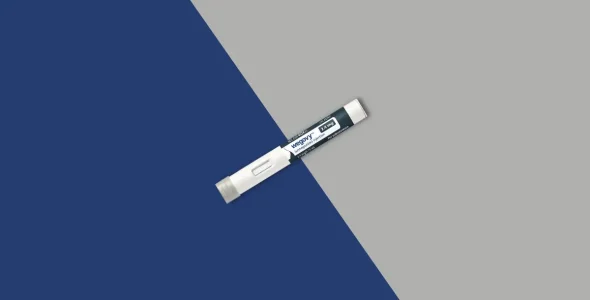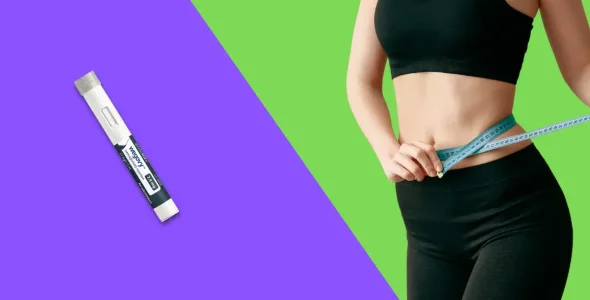Where and how to inject semaglutide for weight loss: a complete guide
Key highlights
- Semaglutide is an FDA-approved medication used for type 2 diabetes and chronic weight management in obese and overweight individuals.
- It Is a once-a-week subcutaneous injection administered under the skin of your stomach, the outer part of the upper thigh, or the upper arm with or without food. Do not inject the pen into a vein or muscle.
- Using the right injection technique, rotating injection sites, and using clean needles, help make sure you get the full dose and reduce risks.
- Semaglutide pens and vials need to be used and stored in a certain way for a safe and effective weight loss journey.
Semaglutide injections might seem intimidating at first, but with a little practice, they can become a simple part of your routine. Once you get the hang of it, self-administering semaglutide at home is easy and can fit smoothly into your schedule.
Semaglutide, also known by the brand names Wegovy and Ozempic, is a glucagon-like peptide-1 (GLP-1) receptor agonist used to lower blood sugar levels, weight loss, and to lower the risk of heart attack, stroke, or death in patients with type 2 diabetes, obesity, and heart disease. It’s injected once weekly with a needle that punctures the top fat layer of your skin.
Whether you’re using semaglutide for weight loss or blood sugar control, it’s important to know how to inject the medication correctly, especially if it’s your first time. Once you learn how to properly inject semaglutide, you’ll see that it’s very easy and nearly pain-free.
The package insert that comes with your medication will have instructions on how to inject semaglutide safely and properly. If you’ve lost it or need more help, we’ve created this guide to help you inject semaglutide.
Keep reading to learn how to inject semaglutide safely and effectively with our step-by-step guide, which includes detailed instructions, helpful tips, and answers to common questions.
Where to inject semaglutide
Semaglutide injection sites include three areas: the abdomen (stomach), the front of the thigh, and the upper arm.
You can choose any of these body areas but it’s recommended to rotate injection sites each week to minimize the risk of injection site reactions, and infections, and to avoid bruising. Don’t inject into muscles, veins, or scars, and don’t use areas of skin that are red, bruised, or cut.
- Abdomen (most people prefer this area): The stomach is one of the easiest places to inject semaglutide and some people find it hurts less than other areas. If you choose this site, make sure to stay at least 2 inches away from your belly button.
- Thighs: Use the front upper part of your thigh which has a lot of fat for the injection but not the inner thigh. You can sit or stand while injecting semaglutide.
- Upper arms: This area can be hard to reach for some people. Ask a family member or friend to give you the injection in this spot. Inject semaglutide on the upper arm 3 inches above the elbow and 3 inches below the shoulder.
To prepare the injection site, wipe the area with an alcohol wipe in a circular motion, starting from the center and moving out. Let the skin air dry before injecting to avoid stinging and to make sure it’s clean.
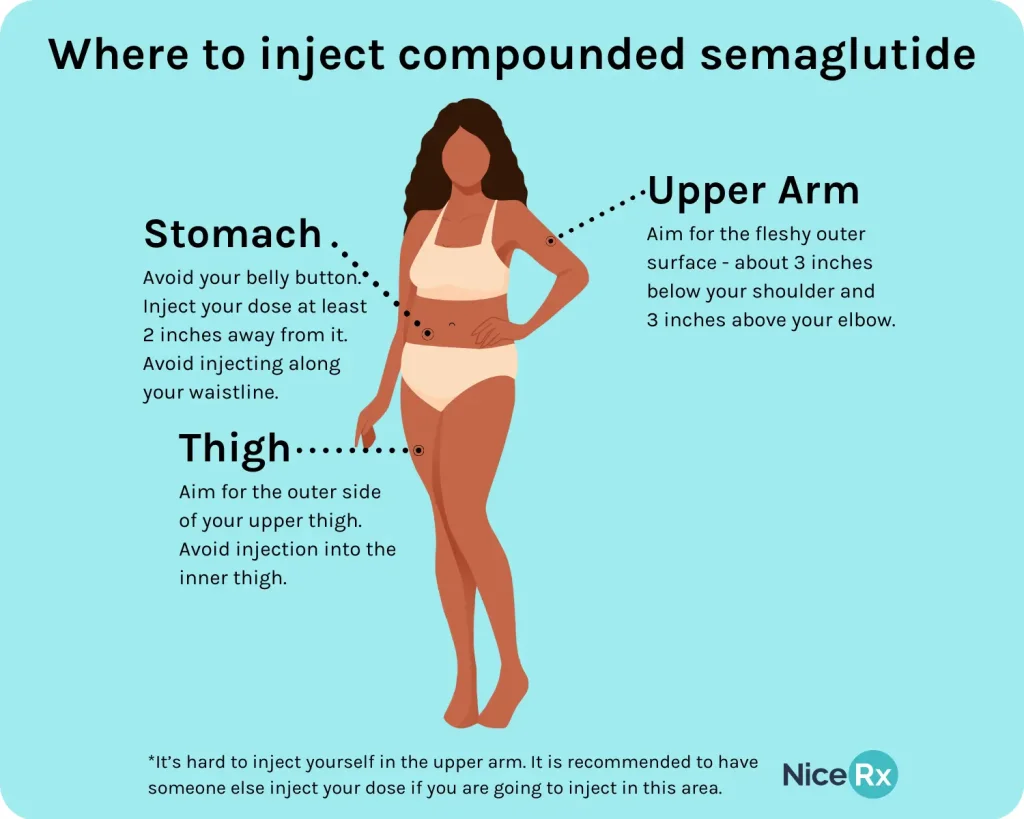
How to inject semaglutide: step-by-step guide
Ozempic and Wegovy are weekly injections that are injected subcutaneously (under the skin), but the pens work slightly differently. Ozempic pens have multiple doses, so you need to attach a new needle for each injection. Wegovy pens have one dose, so you throw them away after one use.
Compounded semaglutide is typically supplied in pre-filled syringes or a vial with syringes that need to be filled each time you inject. It’s also injected under the skin.
Now that we’ve gone over where you should inject semaglutide, let’s get into the details on exactly how to inject semaglutide:
Step 1: Gather supplies and wash your hands
Before starting, make sure you have all the supplies ready. Wash your hands with soap and water for 20 seconds to remove bacteria. Dry your hands with a clean towel or let them air dry to keep your supplies clean. Make sure the area is clean to reduce the risk of infection.
What you’ll need:
- Semaglutide vial
- Alcohol swabs or wipes
- A new, sterile syringe with a needle
- Gauze pad
- Sharps disposal container
- Clean surface for your supplies
Step 2: Preparing to inject semaglutide
Now that you’ve washed your hands and selecting your injection site, it’s time to start preparing your dose:
- Check the expiration date or the beyond-use-date (BUD) on the vial to make sure it’s still good to use. Generally, compounded semaglutide lasts up to 90 days after it’s made, or 30 days from when the vial is opened.
- The liquid in the semaglutide vial should be clear and colorless. It may have a red or pinkish tint if it’s mixed with B12. Don’t use the medication if it’s cloudy, discolored, or has particles.
- Confirm which dose you should be injecting this week. The typical starting dose is 0.25 mg weekly and gradually increases over time as the body gets used to the medication. The syringes are marked with “units” instead of “mg” – your healthcare provider should have provided you with instructions on how many units to use.
- Remove the sterile cap from the vial and wipe the top of the vial with an alcohol swab.
- Take off the protective syringe cap and the needle cap.
- Pull the plunger back to draw air into the syringe to match your prescribed dose.
- Insert the needle into the vial and push the air in to break the vacuum seal.
- Hold the vial and syringe upside down. Pull the plunger back to withdraw the dose and ensure the needle tip is submerged in liquid.
- Remove the needle from the vial carefully and don’t bend it.
- Tap the syringe lightly to remove any air bubbles. If bubbles rise to the top, gently push the plunger to remove them. If needed, add a little more medication to get the correct prescribed dose.
Step 3: Inject the medication
Now, it’s time to start injecting directly under the skin (not through clothing). Make sure not to touch the needle or let anything come in contact with it.
- Pinch the skin at the cleaned injection site to create a small fold. This makes it easier to inject into the tissue just under the skin.
- Hold the syringe between your index and middle finger with your thumb on the plunger, at a 90-degree angle for most areas, or a 45-degree angle for thinner skin areas.
- Insert the needle quickly and smoothly to reduce discomfort. Avoid injecting into veins or muscles – semaglutide should be injected into the tissue under the skin.
- Gently push down the plunger until it’s at the bottom which means that all the medication has been injected.
- After injecting all of the medication, pull the needle out carefully from your skin and cover the site with clean cotton or gauze.
- Apply light pressure for a few seconds, but don’t rub the area to avoid irritation.
Step 4: Dispose of the used needle and syringe
Once you’ve finished injecting, safely dispose of the used needle to prevent accidentally pricking yourself or others. Dispose of the needle in a sharps container, food container, or empty laundry detergent canister. Don’t put it in the household trash.
Don’t try to put the cap back on the syringe as you might poke yourself accidentally.
Place the semaglutide vial back in the fridge and dispose of it in the trash bin once it’s finished.
Step 5: Monitor for reactions
After injecting, look for redness, swelling, or an allergic reaction like a rash or difficulty breathing. If you see anything unusual, contact your healthcare professional.
When to seek medical advice
When using semaglutide for weight loss, you need to pay attention to where and how you inject.
- Severe reactions: If you notice any signs of a severe allergic reaction, like trouble breathing, swelling of the face or throat, or a rash, seek immediate medical attention.
- Injection site complications: Redness or discomfort at the injection site is normal. If you have severe redness, swelling, or pain at the injection site or if you think the area is infected (warm, pus, or fever), call your doctor right away.
Tips for a comfortable injection experience
Here are some tips for a comfortable injection experience:
- Let your semaglutide medication come to room temperature before injecting. Cold medication can sting, so take it out of the fridge a little while before you plan to inject it.
- Take deep breaths and relax during the injection. Tension makes it feel worse, so try to relax and take your time.
- Don’t inject semaglutide in the same spot as other medications, like insulin. You can use the same body area but make sure not to inject in the same body area or around the same spot.
- To reduce pain and prevent infections, always use a new needle for each injection. Reusing needles can cause more pain and blockages.
- Choose subcutaneous tissue (areas with more fat), like the stomach or outer thigh, to minimize discomfort and avoid areas with muscle or scars.
- Use a smaller needle to reduce discomfort during the injection. A shorter, finer needle is less painful and makes the injection smoother.
- Rotate your injection sites each time. You can choose from 5 areas: both upper thighs, both upper arms, and your stomach. You don’t have to use all 5 areas but pick a new one each week to reduce discomfort and prevent scar tissue.
- Don’t inject in areas of skin that are injured, swollen, or scarred.
- Clean the injection site with an alcohol swab before injecting.
- Lastly, don’t rush through the process. Take your time with both preparation and the injection to ensure everything is done properly.
Frequently asked questions
What’s the best injection site for semaglutide?
There is no “best” spot for semaglutide injections, so any recommended site will work.
The three areas where you can inject semaglutide are under the skin of the stomach, upper thigh, or upper arm. The best spot is whichever one is easiest for you.
These injection sites are recommended because they have a layer of fat that helps in medication absorption.
The stomach is a popular choice because it has more fat, making the injection easier and less painful.
How often should I change injection sites?
Ideally, you should rotate your semaglutide injection sites each week. You can switch between areas like the thigh, upper arm, and stomach in any order. You don’t have to use all the areas but make sure you rotate the injection site each week.
If you have trouble reaching the back of your arm, you can stick to your thighs and stomach instead.
Does it matter where you inject semaglutide?
Yes, it does matter where you inject semaglutide. There are three recommended places to inject semaglutide: the stomach, thigh, and upper arm. These areas make it easier for the medication to be absorbed and can help reduce discomfort.
Choose an area with fat that’s easy for you to get to. If you’re using your stomach, stay at least 2 inches away from your belly button.
For your upper arm, choose a fleshy spot on the back of the arm, at least 3 inches from your elbow or shoulder. If using your thigh, inject on the outer upper thigh, not the inner thigh.
How do I minimize pain when injecting?
To minimize pain when injecting semaglutide, make sure to use a clean, sharp needle and inject slowly at a 90-degree angle. You can also try rotating injection sites and applying a cold compress before and after the shot.
Why is there blood after injecting?
Blood after injecting semaglutide can happen if the needle accidentally punctures a small blood vessel under the skin. It’s usually harmless, but you can apply gentle pressure to stop the bleeding and switch to a different injection site for the next dose.
What’s the best time of day to inject semaglutide?
The best time to inject semaglutide is usually once a week, at a time that’s most convenient for you. It can be done at any time of day but try to be consistent with the time each week. Some people prefer to inject first thing in the morning as it’s easier to remember, and some people prefer to inject at night before they go to sleep as it helps with potential side effects like nausea.
When does semaglutide expire?
Semaglutide usually expires 90 days after it’s made or 30 days after the vial is opened. Check the beyond-use-date (BUD) on the vial to be sure. The expiration date may vary by compounding pharmacy.
What should I do if I miss a dose?
If you miss a dose of semaglutide, take it as soon as you remember, as long as it’s within 5 days of the missed dose. If it’s been more than 5 days, skip the missed dose and take your next scheduled dose on time.
How long until semaglutide starts working?
It varies by person. Semaglutide typically starts working within a few days to weeks after the first dose, but it may take a few weeks or months to notice its full effects. Most people begin seeing changes, like reduced appetite or weight loss, after about 4 weeks of use.
The manufacturer of Ozempic and Wegovy, Novo Nordisk, states that semaglutide reaches a steady level in the bloodstream after about 4-5 weeks of use, so you might notice a change in appetite by then.
A clinical trial with 2,000 adults without diabetes who took weekly semaglutide injections with a healthy diet and exercise found that:
- Participants lost an average of 4% of their initial body weight after 8 weeks on semaglutide.
- Participants who took the highest dose (2.4 mg weekly) lost an average of 10.6% of their total body weight after 20 weeks and about 15% of their body weight at 68 weeks.
Other GLP-1 medications like Mounjaro and Zepbound (tirzepatide) have been proven in head-to-head trials to promote significantly more weight loss and will have a slightly different timeline.
Can I reuse needles?
No, you should always use a new needle for each injection. Reusing needles can lead to pain, discomfort, contamination, infection, and inaccurate dosing.
How often should I inject?
You should inject semaglutide once a week, on the same day each week if possible. Your doctor will guide you on the correct dosage and timing for your needs.
How do I store the vial?
Store semaglutide in the fridge between 36°F and 46°F (2°C to 8°C). Do not freeze it, and keep it away from direct heat or sunlight, and out of reach of children and pets.
Semaglutide side effects
Semaglutide is a safe and effective medication used for weight loss and managing type 2 diabetes, but it can cause gastrointestinal side effects. These symptoms usually improve over time as your body gets used to the medication.
Common side effects of semaglutide include:
- Nausea
- Vomiting
- Diarrhea
- Stomach pain
- Decreased appetite
- Indigestion
- Belching
- Constipation
Other side effects that are reported less commonly include:
- Headache
- Dizziness
- Fatigue
- Hair loss
- Muscle pain
- Injection site reactions (redness or irritation)
Serious (and rare) side effects of semaglutide include:
- Low blood sugar (hypoglycemia)
- Pancreatitis (inflammation of the pancreas)
- Gallbladder disease
- Changes in vision (diabetic retinopathy)
- Allergic reactions
- Kidney problems
Semaglutide may increase the risk of thyroid C-cell tumors, including medullary thyroid carcinoma (MTC).
Semaglutide must not be given to people with a personal or family history of multiple endocrine neoplasia syndrome type 2 (MEN 2) or medullary thyroid carcinoma (MTC).
Bottom line
Injecting semaglutide for the first time can be a little bit intimidating but it gets easy with experience. We hope this step-by-step guide will help with any nervousness and give you the confidence to administer the medication yourself from the comfort of your home.
Remember that semaglutide is injected under the skin of your stomach, thigh, or upper arm on the same day every week. The 5 key steps to remember are sanitizing, preparing to inject, injecting, and cleaning up carefully. Remember to rotate injection sites each week to avoid discomfort, irritation, and scar tissue.
To get the full dose, inject semaglutide at a 90-degree angle, keep the needle in place for the recommended time, and always use a new, sterile needle to avoid contamination and blockage.
With practice, self-injection of semaglutide can become easy and part of your routine. If you have questions or concerns about your injections or treatment plan, speak with your healthcare provider.

